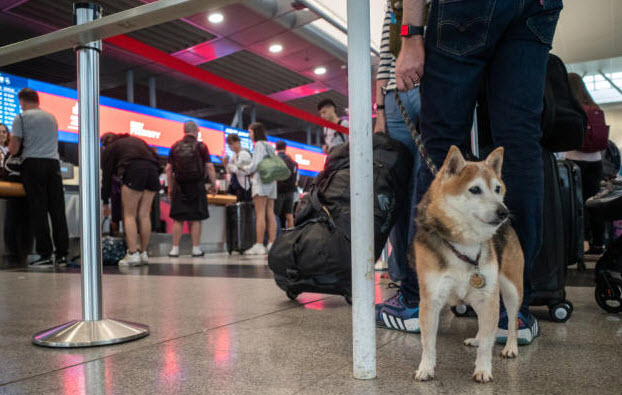Traveling with a pet can often lead to anxiety, primarily due to the constantly evolving regulations surrounding emotional support animals and service dog travel policies established by airlines. The ability for travelers to take their dogs on their adventures hinges significantly on the size of the pet and the specific airline policies. Nonetheless, a recent regulatory change has caused dog owners to navigate complex procedures to keep their beloved companions close.
Here’s what pet owners need to understand about the existing regulations for dog travel.
Updated Guidelines for Traveling Dogs
Recently, the Centers for Disease Control and Prevention (CDC) updated its dog importation protocols. While these new regulations have streamlined some aspects of dog travel, they have also introduced new challenges. Nevertheless, the CDC aims to safeguard public health, so the new measures were implemented on August 1 to mitigate potential disease transmission within the U.S.
The fresh guidelines address concerns regarding the possible resurgence of rabies. There are now specific restrictions on reintroducing dogs into the U.S. based on the rabies risk level of the country from which travelers are arriving—these are classified as rabies-free, low-risk, or high-risk zones. Regardless of their origin, dogs must be at least six months old and possess a microchip in order to enter the U.S. Moreover, dogs arriving from high-risk areas must provide additional documentation, and dog owners must complete a form upon landing at the airport.
How Regulations Affect Dog Travelers
Travelers originating from one of the 100 nations categorized as high-risk by the CDC will need to adopt additional measures. This particularly applies to those venturing to remote or rugged locales. Vaccination against rabies is mandatory for dogs that have spent time in high-risk countries within the past six months. If vaccinated outside the U.S., the process for entry becomes more complicated.
In such scenarios, dogs must enter the country via specific animal care facilities located at six key ports: Hartsfield-Jackson Atlanta International Airport, John F. Kennedy International Airport in New York City, Miami International Airport, Los Angeles International Airport, Philadelphia International Airport, and Washington Dulles International Airport. Furthermore, dogs from high-risk rabies zones might be subject to added measures, which could include a 28-day quarantine at a CDC facility or undergoing a blood test.
These new rules align more closely with the World Organization for Animal Health’s standards. The updated standards aim to decrease the likelihood of fraudulent documentation and keep rabies numbers at bay.
Media Contact
Company Name: USA Service Dog Registration
Contact Person: Scott French
Email: Send Email
Phone: 760-283-7783
Country: United States
Website: http://www.usaservicedogregistration.com

